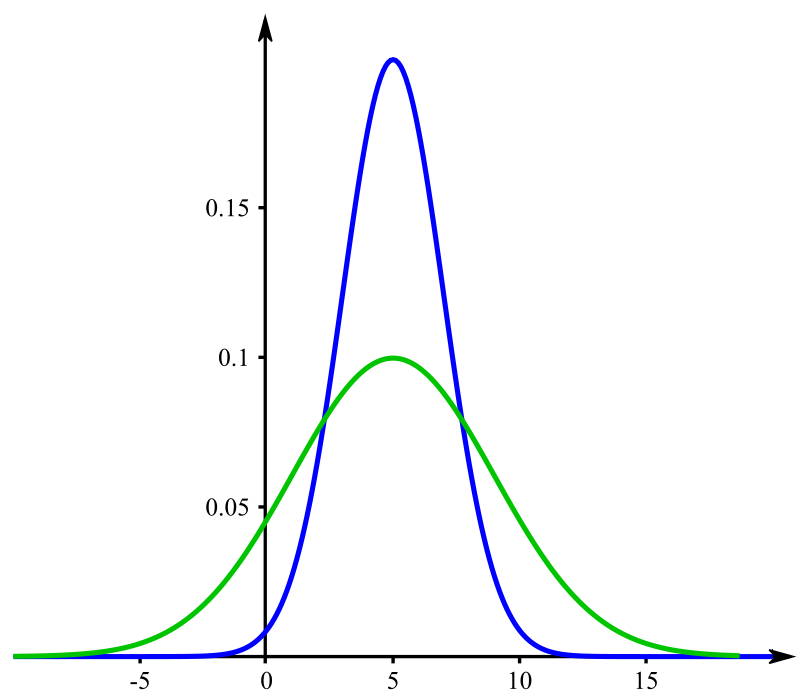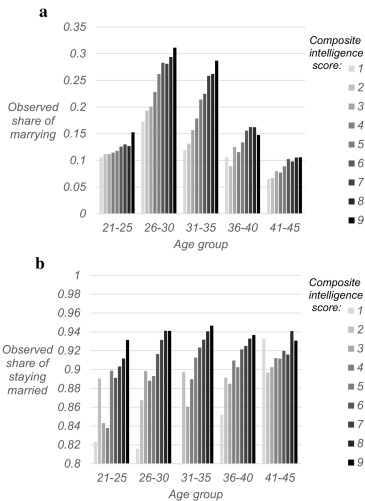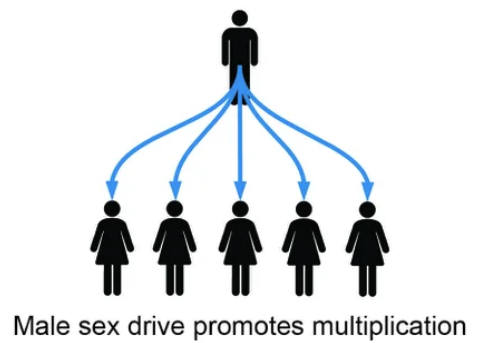This is part of a series. See the index here.
In my post “Methodology,” I lamented how there was so little substantive evidence supporting the concept of hypergamy. The enthusiasm for the concept far outstrips the quality and quantity of the evidence supporting it. Most of the evidence exists in the form of personal anecdotes, little better than arbitrary personal opinion.
Given how many articles I’ve written on the subject, you think someone could come up with even a single paper defending the concept. Instead, we got AIdolatrous slop.
Well, the well-read and aptly-named Professor—the Manosphere’s alleged arch-nemesis (heh!)—left a comment containing a reference to this paper which defends the concept of female hypergamy. So, let’s discuss it.
In primate species in which long-term relationships develop, females generally prefer dominant males as mates.
Primate behavioral psychology does not explain the widespread assortative pairing in humans. Humans and primates do have the same mating practices, in large part because (1) humans evolved differently; and (2) humans have agency. In particular, primates never evolved arrange marriages nor an aversion to rape.
Any argument based on primate behavior is inherently flawed, as first alluded to when we discussed F. Roger Devlin in “Hypergamy and The Early Manosphere.” I concluded:
Devlin’s hypergamy hasn’t aged particularly well. It’s still just as vague, ill-defined, and circular as ever. It still isn’t supported by the data. It still fails to be good at explaining real-world phenomena, such as divorce and infidelity. It still treats women as animalistic and dependent without meaningful agency.
Why am I the only one who sees this? Is there something about my explanation that makes this unclear?
Culturally successful men are preferred as mating and marriage partners.
This claim is highly misleading.
First, men also want to drive cars that cost $250,000, but few men ever will. As I’ve pointed out before, men prefer elite women. In this, their stated preferences are just like women. But stated and actual preferences need not—and rarely do—align.
Second, women prefer successful men only in a theoretical. In actual practice they do not. One Manosphere trope is that “women lie about their partners and preferences” and that these lies hide their underlying hypergamy from the data that shows assortative pairing. In a later post, we’ll discuss the evidence that all women are lying about their sexual experiences. We will show that the data does not support this largely anecdotal claim.
In any case, we can remove the possibility of lying from the equation of mating and marriage partners by focusing instead on what is actually known (rather than what is said). When we do, what we find is that women practice homophily and assortative pairing, not hypergamy. To wit:
In the piece that inspired this series—”Hypergamy is a Myth“–I addressed this very concern, concluding from the data that hypergamy is about preferences. Women and men want to do better, at roughly equal levels. But this desire largely gets canceled out.
The theoretical preferences of men and women are largely not actualized.
Third, actual hypergamous relationships are more likely to fail than homogamous or hypogamous ones at any stage of the relationship. This militates against the idea that those relationships are preferred. It’s absurd to think that a less effective—least fit—mating strategy would have been selected for fitness by evolution. That’s a contradiction. I’ve never seen this explained, and I don’t believe it can be without asserting that polygamy is the evolutionary norm.
Fourth, what constitutes a successful man depends on his intelligence. As discussed here, men have greater variability in intelligence than women, as this exaggerated diagram shows:

Because there are more men than women at the lower tail, there are not enough successful men to go around for all the women. When the supply of assortatively paired men run out, a woman is forced to either forgo a relationship or else pair up with a more intelligent men. But this has nothing to do with the inherent nature of women and everything to do with supply-and-demand. It’s not a matter of preference, it’s a matter of market dynamics. There are not enough “culturally successful” men to go around. This is why marriage rates and marital success are both higher among those with higher intelligences:

Unsuccessful—less intelligent—men are much less likely to both get and stay married. What else would you expect? This effect does not depend on female preferences.
Preferred choices. A woman’s preferred marriage partner and her actual marriage partner are not always the same, due to competition from other women and men’s mate choice preferences.
My frustration with common tropes like this (including the idea of “settling”) is that it begs-the-question. There is an apparent contradiction between the preference of who one might theoretically want to be with and the preference of who one actually selects. Deciding ahead of time which one counts as the “real” preference is circular reasoning. It is rather clear that in this paper, the term “preferred marriage partner” is hereby defined in such a way to exclude the partner she actually selected (i.e. preferred). That presumption is a clear instance of begging-the-question.
The fact is, if you believe that stated preferences (what someone says) trump actual preferences (what someone does), then your preconceived idea of a “preference” necessarily precludes any other conclusion. In doing so, you’ve divorced the idea of preferences from actual choices, completely invalidating any sense of agency. And, most importantly, it isn’t based on any actual evidence, it’s just the way you’ve defined the terms.
As a circular argument, this common trope is not saying anything, but it also can’t be disproven (a circular argument is necessarily true in a trivial sense). Circular claims should simply be discarded. But this particular claim, despite being meaningless, is ubiquitous.
So which are the real preferences? The theoretical ones where a woman prefers a man that she can’t have or the practical ones where she exerts agency to execute her preferences through her actual choices? There is a way to solve this problem: discover which relationships are more durable. There is no question at all: the most durable relationships are the non-hypergamous ones. Humans, unlike primates, have evolved to assortatively pair.
Did I “settle” for a used Mini Cooper worth $6000 when what I really preferred was a $240,000 Porsche 911 GT3 RS? But, why stop there? What I really wanted was Air Force One. Do you think you should psychoanalyze my decision making process in light of my failure to be the President of the United States? Or perhaps such theoretical “preferences” are completely irrelevant.
Elevating daydreams to the level of “inherent female human nature” is lunacy. I care what people do, not what they say.
On the mate choice survey, women rated “good financial prospect” higher than did men in all cultures.
Of course they did!
This is not hypergamy, it reflects sex differences in mate preferences. The former implies that a male and female with the same income should be valued equally, but this does not logically follow from the biological differences between men and women.
To illustrate this directly, consider that a typical 50th percentile man makes more money than a typical 50th percentile women. It is not hypergamy for that woman to seek that man who has better financial prospects than she does. It’s actually homogamy. She is selecting a partner of roughly equal social standing, given the income differences inherent to males and females.
To put it directly, if a woman did not seek a man with “good financial prospects”, she’d be hypogamous. It’s an error in reasoning to conclude that she is hypergamous because she isn’t hypogamous, because there is a third option: homogamy. And the data clearly shows that men and women assortatively pair.
By contrast, if a man sought a woman “with good financial prospects,” he’d be definitively hypergamous. Because of the inherent differences between the sexes, it is only (male) hypergamy when the man seeks a partner with “good financial prospects.”
Thus, the expressed male and female preferences are exactly what we would have predicted if hypergamy was a myth. Homogamy—not hypergamy—explains why there is a natural aversion to men seeking a woman with good financial prospects but no such aversion when women do it.
In each culture, women valued a prospective mates’ potential for success, earnings, status, and social position more highly than did men
As above, homogamy demands this outcome. So does biology. Until men start having the babies and women start doing all the hard physically demanding labor, this will remain the case.
Across studies, 3 out of 4 women rated socioeconomic status as more important in a prospective marriage partner than did the average man.
Well, no kidding! Women have evolved to have the babies. But this has little-to-nothing to do with the relative social standing of a man and woman. It just explains why lower-tier men are relatively under-selected.
Across age, ethnic status, and socioeconomic status, women preferred husbands who were better educated than they were and who earned more money than they did.
This is true, but as discussed in “Hypergamy and Male Variability,” it is also confounded by the natural IQ distribution, so be careful when you interpret this statistic.
This preference is highlighted when women make cost-benefit trade-offs between a marriage partner’s cultural success and other important traits, such as his physical attractiveness (Li, Bailey, Kenrick, & Linsenmeier, 2002; Waynforth, 2001). When women are forced to make such trade-offs, a prospective marriage partner’s cultural success is rated as a necessity and other characteristics as a luxury.
Notably, physical attractiveness is not of primary importance to most women. Thus, hypergamy, if it exists, must either be (1) not primarily based on physical attractiveness; or (2) based on physical attractiveness, but not a primary driver of preferences and behavior.
You’ll note that throughout this series, I have taken the data-driven approach that conforms to this logical conclusion.
With the exception of age and physical attractiveness, women are more selective in their choice of marriage partners than are men (Feingold, 1992; Hatfield & Sprecher, 1995; Hill & Hurtado, 1996; Kenrick et al., 1990).
Women are not more selective than men when it comes to physical attractiveness. According to Kenrick and Feingold, women are less selective. In studies, men consistently place greater importance on physical attractiveness and youth in potential partners. Thus, there is no grounds to conclude that females are hypergamous on the basis of attractiveness, especially relative to men. In other words, this common trope…


…is not only bogus, but it is inverted. Males are primarily sexual selectors, while females primarily select on other attributes.
See also:
- Buss, D.M. (2019), Evolutionary Psychology: The New Science of the Mind
- Li, N. P., Bailey, J. M., Kenrick, D. T., & Linsenmeier, J. A. (2002). The necessities and luxuries of mate preferences: Testing the tradeoffs. JPSP
In addition to ambition, industriousness, and social dominance, women tend to rate the emotional stability and the family orientation of prospective marriage partners more highly than do men (e.g., Oda, 2001; Waynforth, 2001).
Look at this mix of so-called “alpha” and “beta” traits. Women don’t want an alpha or a beta. According to their stated preferences, they want a complete man who is not a stereotypical alpha or beta. After all the time reading the Manosphere, I find this quite interesting.
In short, most women prefer monogamous marriages to wealthy, socially dominant, and physically attractive men, and want these men to be devoted to them and their children. For most women, this preference is not achieved.
Some women attempt to achieve a compromise of sorts through relationships with several men. The implicit goal appears to be to get the best material investment from one man and the best genetic investment from another.
This is another common trope, but the word “some” is doing all the heavy lifting there. When we look at N-count analysis in a future post, we’ll note that at most 10-20% of women fit into this category, perhaps a lot fewer.
But, even so, we must still point out that if not achieving every possible preference on an arbitrary wish-list qualifies as not achieving one’s preferred outcome at all, then pretty much nobody—man or woman—ever achieves their preferred outcome. We must, instead, ask to what extent preferences actually matter. How much does it really matter than I can’t own a 2024 Porsche 911 GT3 RS? Not a whole lot, it turns out.

Derek,
What is the GREATEST proof of female hypergamy of the last 12 years?The U.S. Census Bureau’s 2014 American Community Survey—which covers 3.5 million households—to find out how people are pairing up.https://www.bloomberg.com/graphics/2016-who-marries-whom/
By Adam Pearce and Dorothy Gambrell
February 11, 2016
When it comes to falling in love, it’s not just fate that brings people together—sometimes it’s their jobs. We scanned data from the U.S. Census Bureau’s 2014 American Community Survey—which covers 3.5 million households—to find out how people are pairing up. Some of the matches seemed practical (the most common marriage is between grade-school teachers), and others had us questioning Cupid’s aim (why do female dancers have a thing for male welders?). High-earning women (doctors, lawyers) tend to pair up with their economic equals, while middle- and lower-tier women often marry up. In other words, female CEOs tend to marry other CEOs; male CEOs are OK marrying their secretaries.
If that doesn’t make you think the concept of female hypergamy has some validity to it, then i don’t know what will.
But, even so, we must still point out that if not achieving every possible preference on an arbitrary wish-list qualifies as not achieving one’s preferred outcome at all, then pretty much nobody—man or woman—ever achieves their preferred outcome.
i think even certain people have acknowledged women(like MEN) don’t get everything they want.
Saw a video / short recently of a young man who is def average looking saying this: “I keep hearing about what I have to do to find a “good” woman, and I pretty much have to be “bad” or a player, or indifferent, or arrogant, or crass, or cold, or stoic, and let her know by all of this to let ME know she’s attracted to me”
Pause
“I guess most of decent men us are going to be single forever”
Pingback: Upon Further Examination: Hypergamy - Derek L. Ramsey